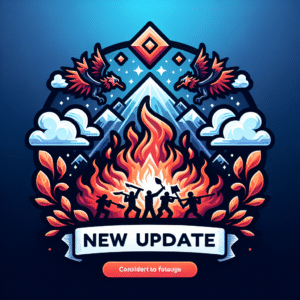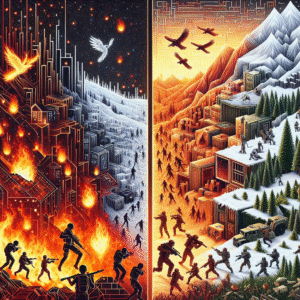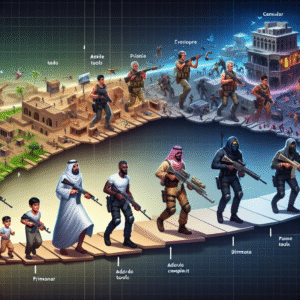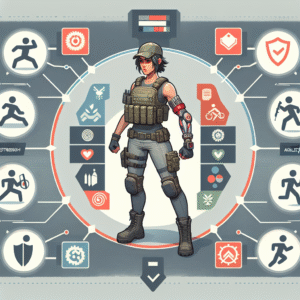Candy Crush Saga: Breaking Down the Level Design
Candy Crush Saga has captivated millions worldwide with its colorful visuals and deceptively simple mechanics. At the heart of this addictive mobile game lies its intricate level design, which balances challenge, satisfaction, and engagement. Analyzing the level design of Candy Crush Saga reveals key insights into its enduring popularity and player retention.
Starting with the basic mechanics, Candy Crush Saga’s core gameplay involves matching three or more candies of the same color. This seemingly simple premise blossoms into complexity through varied tile types, such as jelly squares, licorice locks, and chocolate, which introduce new challenges. The game’s designers use these elements to create progression, gradually increasing difficulty while keeping players intrigued. Understanding these mechanics is crucial in appreciating how they keep the gameplay fresh and exciting.
Level design in Candy Crush Saga varies widely to prevent monotony, a common pitfall in puzzle games. The game features a series of level types, including jelly levels, ingredient drop levels, and timed levels. Jelly levels, for instance, require players to clear jelly off the board by matching candies on top of it. These levels test a player’s strategic planning and ability to make matches that maximize jelly removal.
The designers cleverly intersperse ingredient levels where players must guide ingredients to the bottom of the board. This requires a different approach, often demanding more foresight and planning than typical jelly levels. Timed levels add an adrenaline rush, requiring players to make matches quickly within a finite duration, thus testing speed as well as strategy. This variety helps users avoid fatigue from repetitive gameplay mechanics, sustaining interest across hundreds of levels.
Significant attention is dedicated to pacing the difficulty curve. Early levels serve as a tutorial, gently introducing new players to game mechanics without overwhelming them. Each subsequent level incrementally adds new elements, gradually increasing complexity. This scaffolding approach ensures players develop the necessary skills while feeling a sense of achievement as they progress.
Moreover, Candy Crush Saga integrates a “play-at-your-own-pace” design. Players aren’t pressured with hard levels from the start; rather, they encounter challenging levels intermittently, allowing a cool-down period between difficult tasks. This strategic dispersion of difficulty prevents players from becoming frustrated and quitting, fostering a feeling of accomplishment and motivation to keep moving forward.
One of the genius aspects of Candy Crush’s level design is the use of limited moves. By restricting moves, designers create a puzzle that requires strategy and forethought. Players must plan several moves ahead, ensuring they use their limited resources effectively. This constraint turns what could be a casual game into a strategic exercise demanding players’ attention and mental agility.
The game effectively uses a ‘fail-but-not-quite’ approach, where players might narrowly miss completion, enticing them to try again. This mechanism taps into the Zeigarnik Effect, a psychological principle where people remember uncompleted tasks better than completed ones. By not completing a level, the player’s subconscious nudges them to keep playing until they succeed, bolstering engagement rates.
Social integration also plays a vital role in Candy Crush Saga’s level design. Players can see their friends’ progress on a map, instilling a sense of competition or camaraderie. This social influence nudges players to complete just one more level to keep up with or surpass peers. Features like sending lives or gaining extra moves through friends further integrate social dynamics into the game’s design, encouraging more frequent play and interaction.
Candy Crush Saga’s monetization strategy ties closely to its level design. Difficult levels often tempt players to purchase boosters or extra lives, seamlessly blending gameplay and revenue generation. The accessibility of in-game purchases offers immediate gratification, turning difficult levels into opportunities for shrewd monetization. However, the game carefully balances this by ensuring purchase choices never feel obligatory, thereby avoiding alienating players who prefer not to pay.
Candy Crush Saga maintains ongoing engagement through regular updates. The introduction of new levels ensures long-term player retention. These updates frequently coincide with events or special challenges, offering unique rewards and altering familiar gameplay elements, continuously refreshing the experience. By providing players with novelty and surprise, Candy Crush sustains momentum and reengages players who may have drifted away.
Narrative elements, while subtle, also enhance the level design. The game is set in the whimsical Candy Kingdom, where each section introduces a new character or story arc. These narrative interludes provide context and motivation for players, transforming the simple task of clearing candies into an adventure filled with characters and goals.
Candy Crush Saga’s level design is meticulously crafted to appeal to a broad demographic. Bright colors, cheerful sound effects, and charming animations create a sensory-rich environment that draws players in. This aesthetic appeal is matched by cognitive challenges, balancing sensory stimulation with intellectual engagement.
Data-driven decision-making is a final, hidden layer of Candy Crush’s level design. King, the game’s developer, utilizes analytics to refine and perfect levels, optimizing for player experience. This process involves analyzing player behaviors, such as levels at which they quit or make purchases, and adjusting difficulty or mechanics to maximize enjoyment and profitability.
In dissecting Candy Crush Saga’s level design, we see a flawless synergy between art, psychology, and technology. The meticulous crafting of levels, strategic monetization, and ongoing updates make it a masterclass in mobile game design. Through its playful exterior and strategic depths, it has become more than just a game – it is a cultural phenomenon, constantly evolving and capturing the imagination of players around the globe.











Post Comment